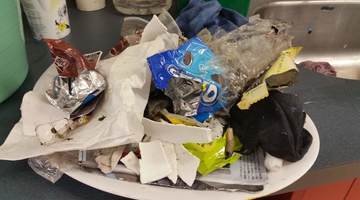Dianne Christenson explains how she used an online citizen science (OCS) project as part of a primary school unit on kaitiakitanga. Although the OCS project – The Plastic Tide – is now complete, she shares valuable insights into the benefits of using projects like this one as part of a wider unit of learning and taking action (see also Litter Intelligence and Litterati). These include:
- contributing to a real science project
- learning about the nature of science
- developing a global perspective in relation to a local problem.
Dianne also mentions ‘machine learning’ in this clip – the process whereby algorithms in digital applications (such as websites or smartphone apps) are able to use new data to refine outputs, without explicit instruction. The Plastic Tide aimed to automate the detection, measurement and monitoring of marine litter and plastic. It used the work of real people – citizen scientists – to refine the automated identification of litter.
In 2016, Dianne was awarded the Prime Minister’s Science Teacher Prize.
Transcript
DIANNE CHRISTENSON
I used an OCS project that was called The Plastic Tide. It was a project that linked really well to a unit on sustainability and looking after our environment or kaitiakitanga. It was based on identifying plastic rubbish found at beaches around the world.
We planned our unit to incorporate a lot of hands-on activities, and the OCS portion of the learning was only a very small portion, but it was something that we returned to several times. That repetition was really important for the children to firstly realise that you don’t just do things once – that in science you actually need to be able to repeat experiments.
It’s a global project and so the children saw the relationship between the photographs that they were looking at and their prior knowledge that there is a lot of plastic on our beaches, and so it gave the children a global perspective on a local problem.
They also see it in our local stream. They see it on the streets as they go through. And so we did a lot of linking of waste audits, lunchbox audits. We had LittaTraps that we monitored on a weekly basis both outside the school and down at our local shopping area, and we were doing stream monitoring at the same time. And so we were trying to build a big local picture for our kids so the OCS brought in the global perspective for the kids.
This was the first time that I’d used an online citizen science project as part of my teaching unit, and initially, I was a little bit sceptical that it would work because of the age of my children. And it was also a step away from normal for me in that children weren’t collecting their own data. So with The Plastic Tide, they were using photographs that had been taken from drones of beaches, and they were identifying rubbish that was on those beaches, plastic rubbish specifically.
Students were much more engaged and engaged for far longer than I initially thought that they would be. They were also really keen to access the project multiple times and repeat their observations.
Initially, there was a lack of precision among the children in identifying different types of plastic. Some things were easier than others. Plastic straws were usually pretty obvious, or pieces of fishing net were very obvious, but when you got down to the little pieces of hard plastic, some of them could be quite tricky, and again that was practice.
I went down to the beach and gathered up a whole lot of sand with plastic and gave them that hands-on experience of pulling those things out and seeing what they were likely to actually be seeing in person as well as on screen. And that actually was a really good grounding for them for what they would find, and because it was our local beach, it actually was quite meaningful to them as well.
Using the project helped my children learn about drones, and it helped them to see drones as tools rather than toys and specifically as tools that are used by scientists. And it also introduced them to the idea of machine learning and that we can teach machines and support them to learn.
It allowed the children to see themselves as purposeful contributors to science, and that made them very aware, along with a lot of discussion from the teachers, of the need for quality in their data.
It was very interesting to see the development among the kids of quality work where they became more skilful at drawing fields around pieces of rubbish but also as they became more skilful at identifying individual pieces of rubbish.
The project gave a real context for the children to discuss scientific thinking, to discuss accuracy in repetition of experiment, and it gave a really global perspective on a local problem and the children saw themselves as scientists and saw themselves as doing something purposeful that was helping Papatūānuku.
Acknowledgements
Dianne Christenson and her students from Koraunui School
Victoria University of Wellington
Teaching & Learning Research Initiative
Drone footage and additional images of beach litter and online information courtesy of The Plastic Tide, a now completed citizen science project
Footage of LittaTrap being emptied, courtesy of Stormwater360, New Zealand
Panoramic photograph of Petone foreshore, courtesy of Ulrich Lange, released under Creative Commons licence CC BY 3.0




